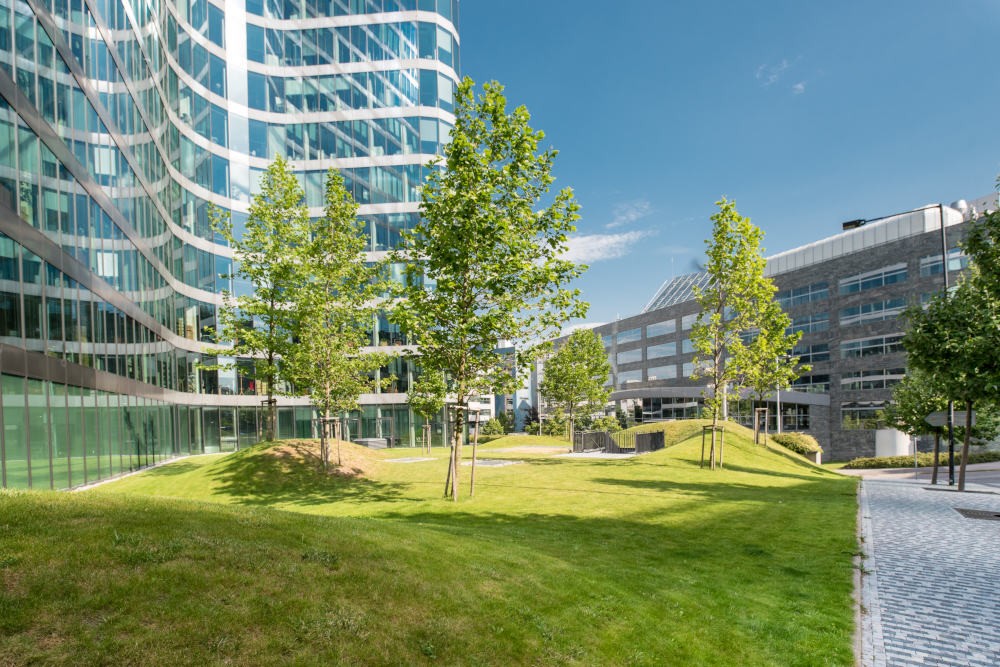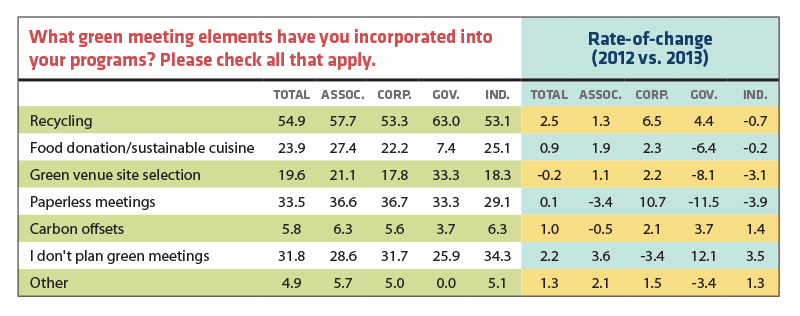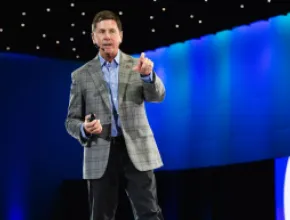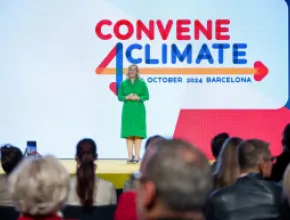Planner adoption of sustainable meetings practices is growing, as evidenced by this year’s Meetings Focus Trends Survey—nearly 25 percent more said they were either planning or expect to plan a green meeting. Many have a key set of green practices they try to incorporate into programs.
Below are recommendations for getting started with each of the five sustainability strategies measured in this survey:
Recycling
Most cities will be able to recycle paper, glass and cans. Other items, including plastics, may not be available locally. Find out in advance what products can be recycled or donated locally to charitable organizations, such as leftover conference bags. Tell any stakeholders that may bring in large amounts of materials to try to minimize packaging and use materials that can be recycled on-site.
Food Donation/Sustainable Cuisine
Introducing a food waste management strategy to an event is beneficial for both the environment and the event’s financial bottom line. For greatest effectiveness, a food waste management strategy begins with reducing food losses in the supply chain, followed by reducing the amount wasted at events. Once the food waste is reduced as much as possible, the next step is to determine what to do with what is left. Food donations are often possible. In many places, legislation exists that protects food donors from liability.
Green Venue Site Selection
The APEX/ASTM standards released last year provide a great starting point for assessing green venue attributes. Some facilities have started to certify to the venue standards.
The Green Meeting Industry Council recently announced and launched a new campaign called Ask For It! in support of the APEX/ASTM standards that were completed and published in full this year. The campaign is targeted at planners, encouraging them to ask suppliers for sustainable practices. It also is a call to action for suppliers to the events and meetings industry—venues, food and beverage, hotels and others—to certify against the standards at least to level-one compliance.
The standards cover the nine sectors of a meeting or event: destination, venue, accommodations, food and beverage, transportation, AV, exhibit hall, marketing communications and on-site office. These standards provide the common vocabulary and guidelines for anyone wanting to run a more sustainable meeting, whether planner or supplier.PageBreak
Paperless Meetings
More and more events are opting to replace printed materials with electronic versions.
If you are using a mobile app, check that attendees will have access to sufficient Internet bandwidth to download the app and updates.
Sometimes printed materials are needed for confidentiality or effective learning. Recommendations here are to ensure that shredded materials are recycled, paper use is limited by double-siding and formatting choices, and post-consumer recycled products are used.
Carbon Offsets
When you hear of a carbon-neutral event, carbon offsets have likely been utilized to compensate for emissions created by the event, mostly through travel.
The best strategy is to reduce emissions before they occur, such as by encouraging the use of public transportation instead of individual cars. Not all carbon offsets are equivalent; look for projects that wouldn’t have occurred otherwise (referred to as “additionality”), third-party verification and recognition by a recognized standard.







